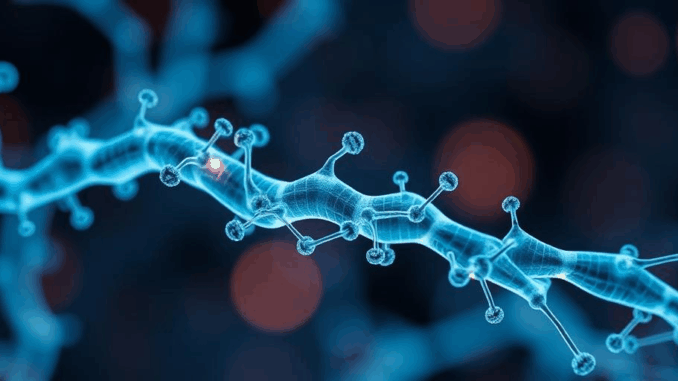
Summary
This article explores the latest advancements in Type 1 diabetes (T1D) treatment, moving beyond insulin management to disease modification and potential cures. From stem cell therapies and immunotherapies to artificial pancreas systems, these breakthroughs offer new hope for individuals living with T1D. The future of diabetes management is bright, with ongoing research paving the way for a life free from the daily burden of this chronic condition.
Safeguard patient information with TrueNASs self-healing data technology.
** Main Story**
Type 1 diabetes (T1D) has always been a tough one. For years, it’s been about managing the condition with constant insulin injections, not curing it. But things are changing, thankfully! The world of T1D treatment is really transforming, and the scientific community are finding breakthroughs which could bring hope to so many people. Let’s dive into some of the most exciting developments, and see how they’re shifting diabetes care from just management to actual modification, and maybe even cures.
Stem Cell Therapy: A Shot at Regeneration
Stem cell therapy is really at the cutting edge of T1D research, and I think it’s got massive potential. Scientists are trying to use the regenerative powers of stem cells, specifically mesenchymal stem cells (MSCs), to grow new insulin-producing beta cells. VX-880, which is still in trials, has had some pretty amazing early results, it restored islet cell function in people who were part of the trial. Imagine if this could restore the body’s own insulin production! That’d mean, maybe, no more daily injections. Or at least a significantly reduced reliance.
Immunotherapies: Stopping the Friendly Fire
T1D is an autoimmune disease. Which means, our own immune system turns on itself and attacks the insulin-producing beta cells in the pancreas. Immunotherapies, on the other hand, aim to tweak this immune response, which could stop further destruction of these essential cells. Teplizumab got approved in late 2022, and it can actually delay the onset of T1D. Which, if you think about it, is a pretty big deal.
Other immunotherapies are looking into “exhausting” those destructive T cells. What this means is, rendering them inactive without completely wiping them out. The aim is that this would preserve the immune system’s ability to fight off infections, which is pretty important. Also, drugs like Baricitinib, often used for rheumatoid arthritis, have been showing promise in slowing down T1D’s progression. So, that’s pretty interesting.
Artificial Pancreas Systems: Automation is Your Friend
Artificial pancreas systems, are another step forward in managing T1D and they’re already making a difference to people’s lives. These systems are closed-loop, which is to say, they combine continuous glucose monitoring (CGM) with automated insulin pumps. How cool is that? The CGM is always tracking your glucose levels and sends that data to the pump, which then automatically adjusts how much insulin to give you. Basically, it mimics what a healthy pancreas does, improving glycemic control and reducing the risk of both hypoglycemia (low blood sugar) and hyperglycemia (high blood sugar). It’s not perfect, but it’s definitely a game changer for a lot of people I know.
Other Promising Developments to look out for…
- Islet Cell Transplantation: This involves transplanting islet cells (they contain insulin-producing beta cells) from a donor pancreas into someone with T1D. The thing is, getting enough donors is a challenge, and you need immunosuppressant drugs to prevent rejection. But researchers are working on beta cell encapsulation techniques to protect the transplanted cells from immune attack. So fingers crossed this becomes a more viable option!
- Gene Therapy: Gene therapy, could this be the holy grail? Scientists are looking at using it as a potential cure. The idea is to reprogram other cells in the body to produce insulin, so they’re basically replacing the destroyed beta cells. I mean, talk about futuristic, right?
The Road Ahead Looks Bright
The future of T1D treatment? I’d say it’s looking brighter than ever. As research moves forward, these exciting therapies offer the hope of not only improving how we manage T1D, but also of achieving a functional cure. Just imagine, freeing people from the daily grind of this chronic disease. While some of these treatments are still in the trial phase, all the progress that we’ve made so far gives us a lot to be optimistic about. I mean, a future where T1D isn’t a lifelong struggle? That’s something to get excited about. In short, it’s vital to keep up-to-date with these developments and have a chat with healthcare professionals, so you have the most up-to-date information available to you and you understand all of your potential treatment options.


So, if gene therapy can reprogram cells to produce insulin, does that mean I can convince my fat cells they’re actually muscle cells? Asking for a friend who hates working out but loves the idea of a “miracle cure.”
That’s a fun thought! While reprogramming fat cells into muscle is still science fiction, gene therapy’s potential is definitely sparking exciting possibilities in regenerative medicine. Imagine a future where we can target specific cells to address various health issues! What breakthroughs do you think we will see in the next 10 years?
Editor: MedTechNews.Uk
Thank you to our Sponsor Esdebe
Regarding islet cell transplantation, what advancements are being made to overcome the challenges of donor availability and the need for immunosuppressant drugs, beyond beta cell encapsulation?
That’s a great question! Beyond encapsulation, research is exploring methods to expand the donor pool, like using pig islets, and engineering immune-cloaked cells that evade rejection without needing broad immunosuppression. The goal is to create a readily available and universally accepted cell source. It’s a really exciting area of research!
Editor: MedTechNews.Uk
Thank you to our Sponsor Esdebe
So, artificial pancreas systems are almost here… but what about an artificial *appetite*? Imagine a closed-loop system that not only manages insulin but also politely suggests salads instead of that extra slice of cake. Now that’s next-level automation.